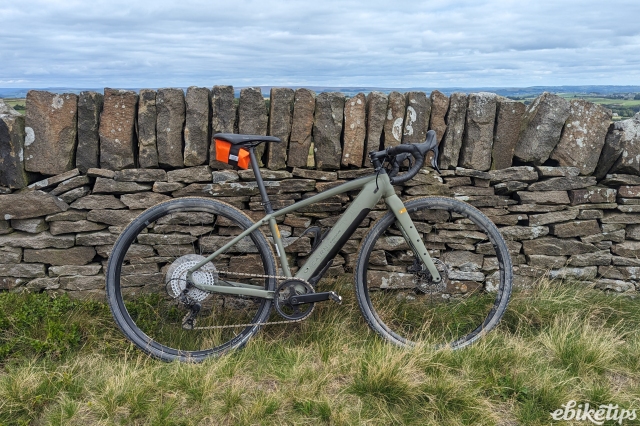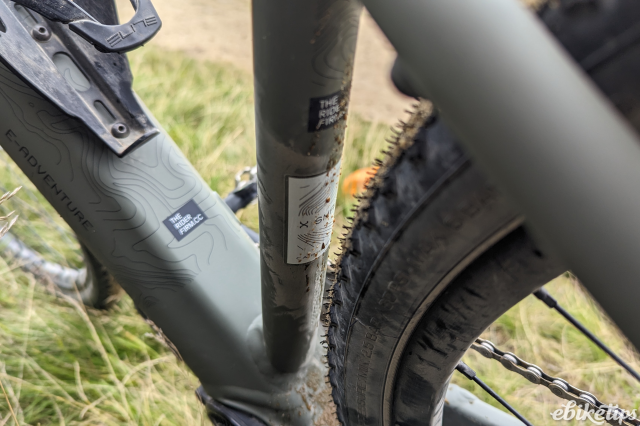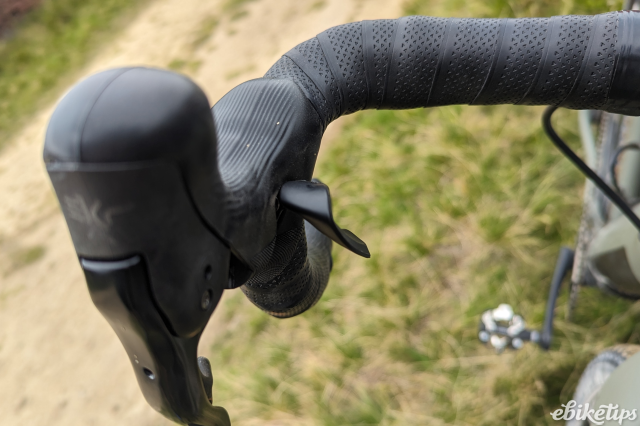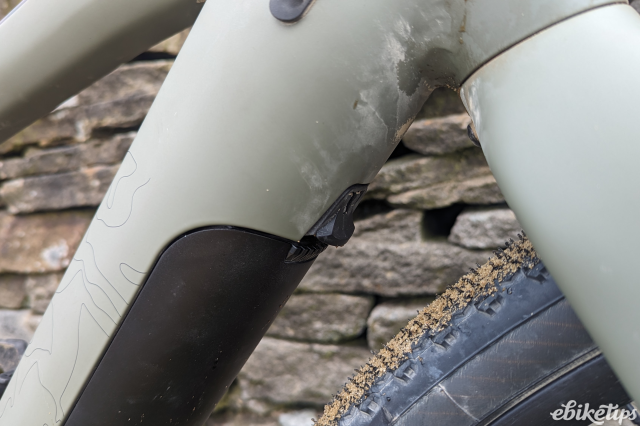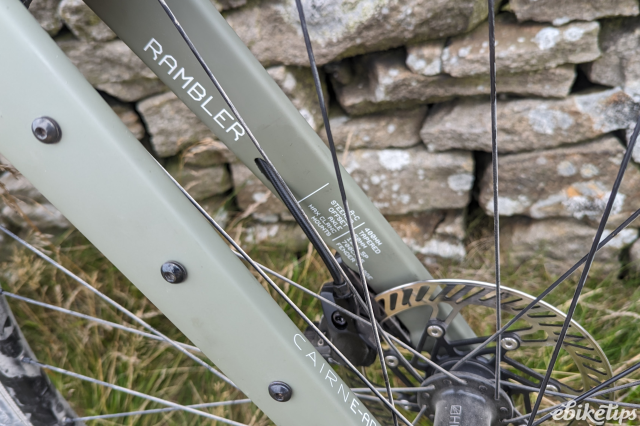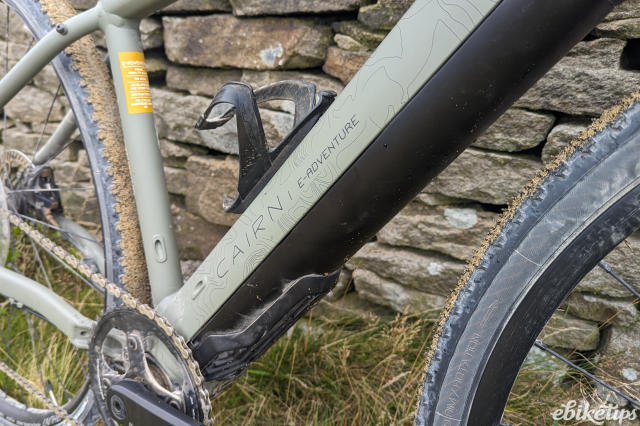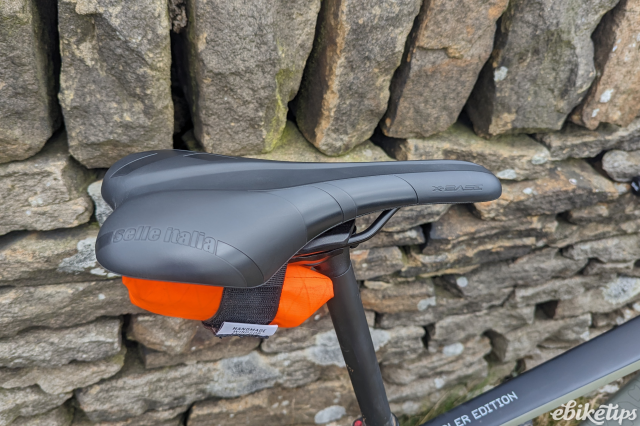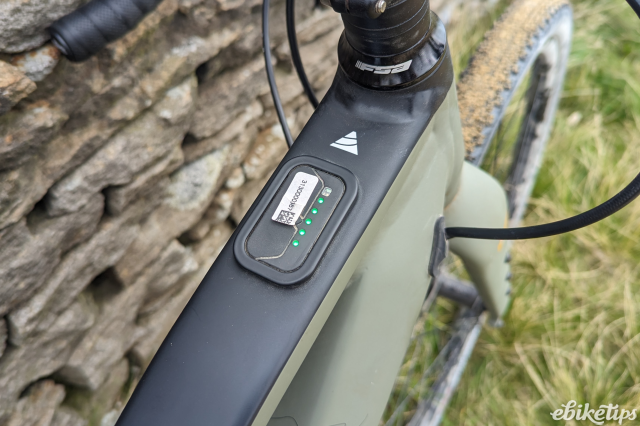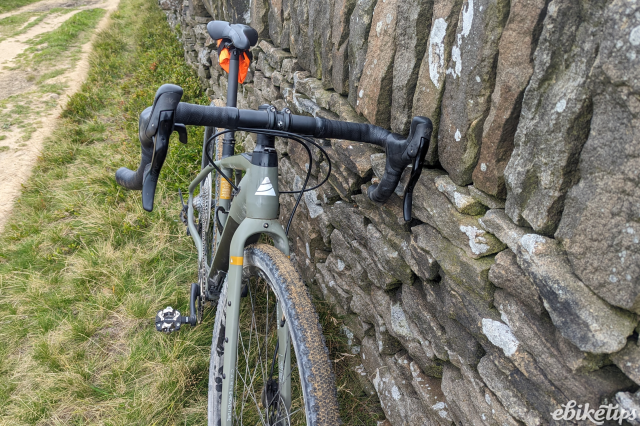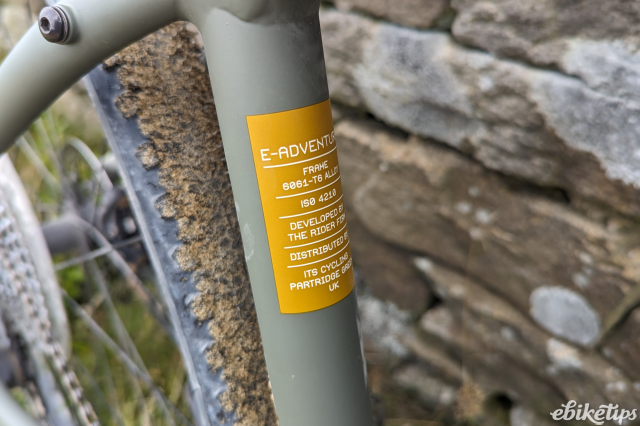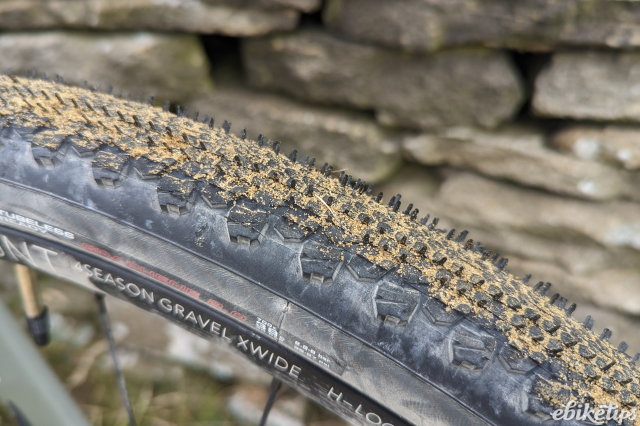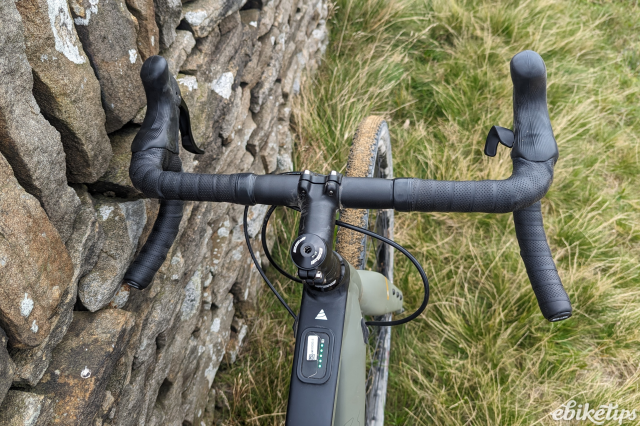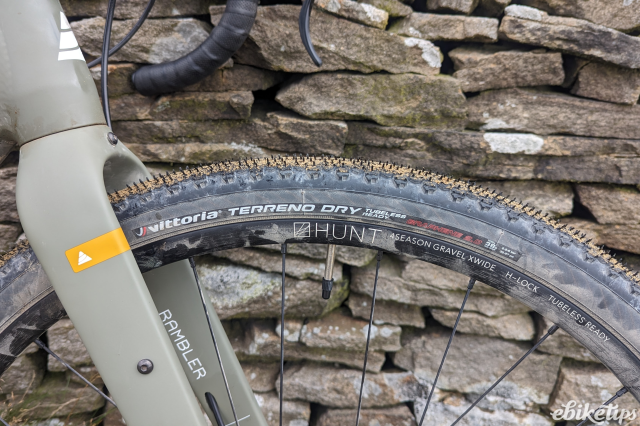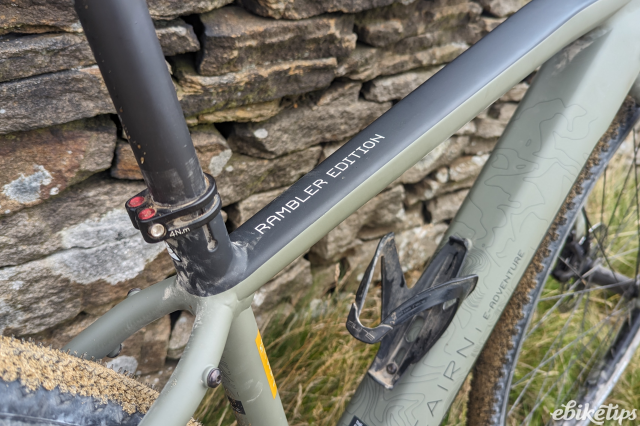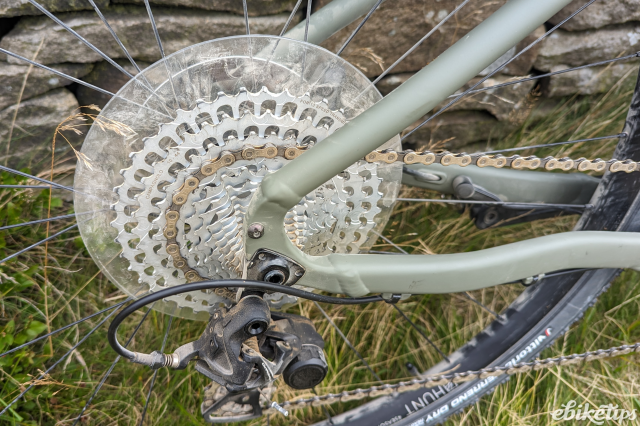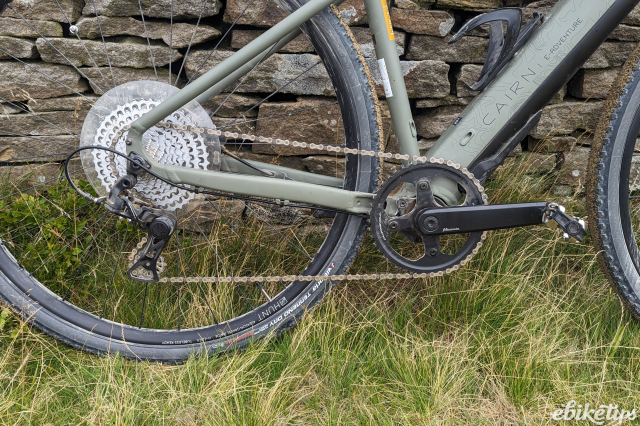Cairn E-Adventure Rambler
Overview
- Frame geometry well-suited to gravel
- Versatile and adaptable for different kinds of riding
- Excellent drive system and battery
- Motor occasionally cut out
The Cairn E-Adventure Rambler is an all-around gravel beast, but with versatility that the previous version didn’t offer. The Rambler - which is the most recent version of Cairn's popular e-gravel bike, the E-Adventure 1.0 - comes with upgraded frame geometry, a much sleeker look, and, in this case, a Campagnolo Ekar groupset.
Cairn is part of The Rider Firm, which also owns Hunt Wheels and Privateer Bikes. Cairn is the electric bike side of things, and currently offers this, the E-Adventure, and a flat bar Cairn BRAVe 2.0. (Our sister site off-road.cc reviewed the 1.0 drop bar version in 2021.)
If, like me, gravel riding has always been a bit of a question mark, then I urge you to go and try out one of these Rambler’s on a dusty trail. The handling, the comfort, and most importantly, the fun I experienced atop this bike was game-changing.
Gravel hasn’t always been at the forefront of electric bike manufacturers' minds, and you can still see that in models with less than adequate hub motors or copy and paste road bike geometries with slightly wider bars. The difference with Cairn is that they’ve always been a gravel loving company, and it shows.
The frame
The frame takes more inspiration from modern mountain bikes. It’s slacker than its predecessor, it’s more aggressive, but at the same time it’s also more comfortable. Having wide, flared bars on its own doesn’t a gravel bike make, but they do give you confidence that narrower options may not provide on descents.
There are five sizes to choose from: XS to XL, and I was given an XS to try. At 5ft 5in, it was spot on. I like quite a small frame anyway, but there is a handy guide on the website that provides suggestions on your optimum size based on height and riding position.
It’s also been given plenty of mounting points for luggage racks and bike bags. So if you want to take it bikepacking, that’s an option. Equally, if you want something a bit more fun to get to work on, this can be that bike. I enjoyed it so much, I found myself choosing it over probably more practical bikes for errands like going to the shops, or taking the dog to training classes.
The motor and battery
And this is another thing – if you have a trailer on or a dog in a backpack (and I imagine a full bikepacking setup), the bike is still stable yet agile. This is in part due to the Fazua drive system. The Rambler uses one of the newer options, the Fazua Ride 50 Street Drive Pack. The 50 provides up to 58Nm of torque, which I felt was enough.
There was a particular climb in a gravel event I did, which was roughly 25% at the worst parts. Utilising the highest level of assistance (known as Rocket), I was able to power up this climb with relative ease, watching others struggle or unclip over the rocky terrain. And I think, that’s what a good e-gravel bike should be about: not making the ride really easy, or numbing the feel of the terrain beneath you, but making you feel confident to conquer difficult climbs, or ride a bit further and know that you have the motor as a backup.
The only small problem I had with the motor was that it occasionally cut out. I couldn’t for whatever reason pair the bike to the app (most likely my ageing phone’s fault) to diagnose it or just to connect and hope that helped reset it, so occasionally I’d be riding along in River or Rocket mode (explained below) and it would just cut out. Luckily it engages pretty quickly when you use the touchpad on the top tube, but it was always at the back of my mind.
The Ride 50 system comes with the usual three levels of assistance from Fazua. Breeze is the lowest, and offers up to 100W of boost, then River at 210W. Interestingly, this mode is interactive, and gives out what you put in. A bit like Auto mode in some of the higher end Bosch motors, it reacts to your power and then provides as much assistance as you need up to 210W.
However, if you’re hitting 25% inclines, then the third level is for you: Rocket. This is the most powerful of the three, and provides constant assistance up to the legal limit.
This is paired with a 250Wh battery, which Cairn suggests can provide up to 120km (74 miles) in range. The longest ride I managed on the Rambler was just under 40 miles, switching between turning it off for the flats and descents, and then mixing between the three levels depending on the steepness of the climbs. At the end of the ride, I had less than one bar of battery left - I know this because it started flashing as if it was almost drained. So I think 74 miles could be manageable, as long as you’re riding somewhere pretty flat and sticking to Breeze for the most part.
Users of the older E-Adventure will remember the sometimes awkward method of releasing the battery pack – and that you had to turn it on, before reinserting it. That’s changed, and now you can turn it on using the top tube controls. The top tube controls aren't for everyone though, and I personally would prefer handlebar mounted options.
If you want to remove the battery, that is still possible - just remember to catch it and not let it fall on the floor (not at all speaking from experience). The best way I found to do it was either sacrilegiously put the bike upside down and release the battery that way, or simply turn the bars so the battery doesn’t foul on the wheel, and have one hand underneath the battery to avoid dropping it.
The beauty of this bike as well is that you can ride without the battery in, and it doesn’t feel that much different to an unassisted bike. Naturally, there is a small level of drag from the motor not being engaged, but the overall rideability isn’t significantly compromised.
Ride quality and components
I tested this bike across Yorkshire, from North Yorkshire’s Moors and dusty fire roads - what I call, ‘prime gravel’ - to sloggy bridleways that look like an abandoned quarry. The sheer capability of this bike astounded me. I took it to places I’ve ridden electric hardtails and felt a bit unsure, but the E-Rambler managed most stuff with ease.
The Vittoria Terreno Dry tyres even survived some of the monsoon season we called summer this year, and paired with the Campagnolo 13-speed Ekar groupset, I felt pretty unstoppable on this bike. It was quite hard to find a fault.
Campagnolo isn’t always a fan favourite, but as someone with smaller hands, I really appreciate the thumb shifter option. The gear changes were crisp and precise, and the 10-44t cassette offered a wide enough range for all the climbs I encountered – even riding unassisted. The brakes were pretty decent too, with minimal fade on longer descents.
Conclusion
Would I recommend the Cairn Rambler? Absolutely. It’s not the cheapest at £4,289, but if you’re serious about gravel, or even want something that’ll be a decent all-year-round commuter with a bit of gravel thrown in on the weekends, it’s worth considering. (If you have the cash, of course.) And if Campagnolo isn’t your thing, they’ve recently launched a SRAM Rival edition for just under £3,500.
At this price point, you’re into Canyon Grail:ON territory, which uses the Bosch drive system and comes with those rather distinctive bars. If bordering on £5,000 is too much, then the Cairn BRAVe 2.0 Flat Bar could also be an option. It’s been updated since we last reviewed it, and uses a Shimano Steps E7000 drive system, but could make an ideal commuter/flat bar gravel bike.
1 comments
"The beauty of this bike as well is that you can ride without the battery in, and it doesn’t feel that much different to an unassisted bike. Naturally, there is a small level of drag from the motor not being engaged,..."
Pretty sure that with Fazua the motor and battery are housed together as one unit. When you drop the battery out, the motor is coming with it, so it can't be contributing any drag if you ride the bike like that. You can buy a dummy unit to fill the void in the frame, which can be used as storage too. All that remains is the gearbox that connects the drive motor to the pedal input.
